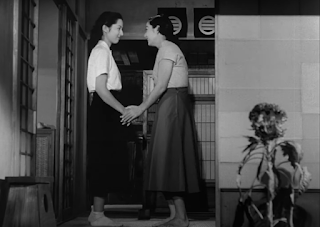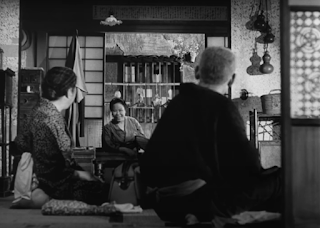James, the agnostic producer of a Malayalam theatre group and one who is in constant search of truth, at some point of time on his return from a long pending and reluctant pilgrimage, crosses the Churuli-esque bridge and enters the realm of dreams.
The movie begins earlier with the song which refers to 'wandering in search of the unknown' (irukkum idaththai vittu... yedhum ariyaada..) but right at that moment when James crosses the bridge between the sleep disturbed reality and the dream that promises to reveal him the truth, the background score morphs to a more explicit question iraivan irukkintraanaa? (is there god?).
Deep inside his dream, he drags his entire entourage along the sleepy streets lined with walls plastered in cow dung cakes that can be used to cook rice as well burn dead bodies. As James rides the rickety bike through dreamy and colourful mindscapes of Sundaram in search of the elusive truth, his family and friends, unable to grab hold of him, wander the yellowish Tamil landscapes.
Just before the beginning of this trip, the first words spoken in Tamil are the ones that promise to 'reveal'.
When the hope of revelation was kindled before the journey, the lights were still flickering in the lodge corridor. The same light that started flickering in Vavachan Mesthiri's house just before his death (in movie Ea Ma Yau by Lijo Jose). And the same light, incidentally, was seen flickering in the bar where the Stalker assembled his fellow passengers ahead of their trip to the Zone, with a promise of revealing the ultimate truth (in movie Stalker by Tarkovsky).
The villagers taunt James for being ignorant of the temple "which has always been there".
And when the dead Mayilswamy's face inside the photo frame pans to James (inside the mirror frame), inevitability of his own death is revealed to him.
Inside the Sundaram dream, James recognizes the divine providence, as well as the definitude of death.
Inside the James dream, Lijo leaves behind his shadowy loops and is liberated from his entangled dreams.
That was as much Lijo's personal pilgrimage as James's.
When the camera pans from Mayilswamy to James, what we hear is probably the only non-diegetic sound of the movie and that ends with the sound that we heard at the beginning of the dream- the clattering sound of the window glasses of the bus, signifying the beginning of the end of dream.
Lijo, and James wake up from the dream and they are now "ready to go", in peace -with the knowledge that death is just another episode of sleep.
James is no more scared of death, one similar to what his grand dad had to face, against his wish. He no more insists that he is perpetually bonded to the earth on which he lies down. He no more needs any persuausion from his family, friends, villagers, the dog.. to leave this earth. He realises that death isn't a show stopper. It isn't worth closing down the ration shop.
James vaguely sees the long lost Sundaram amid the bittergourd farm. And suddenly, the dreamscape of corn fields that separates his reality from his sleep dries up.
He is ready to go.
The spiritual dimension aside, a pilgrimage of aesthetics can be drawn out of this movie. In the middle of the night the driver bridges these two narratives when he says: നാടകമേ ഉലകം
"The whole world is a stage. That is what this is."
When he walks into the dream, James leads his theatre group into a different universe, one which is enveloped by sounds from Tamil movies-mostly from a distant past. It is as if they enter a huge bubble whose boundaries are defined by these sounds. And the visuals from these movies are so intense that they can be appreciated even by a pair of dead eyes.
Juxtapose this to the disturbingly jarring visuals from a movie that one sees inside the bus. Lijo's perspective of aesthetics undergoes a massive transformation when he realizes that Sundaram is a better storyteller. His performances inside the local bar and the village hang-out stand proof for that. Lijo decides to imbue his artistic values with the essence of Thirukkural, above which, nothing else will rise.
And that was Nanpakal Nerathu Mayakkam.




















































